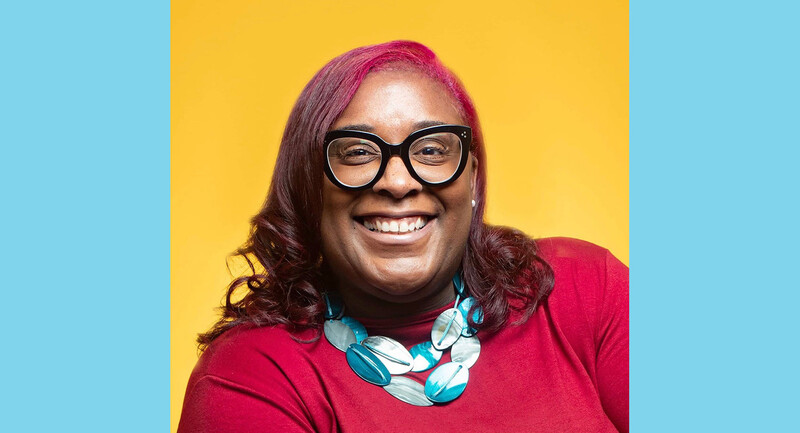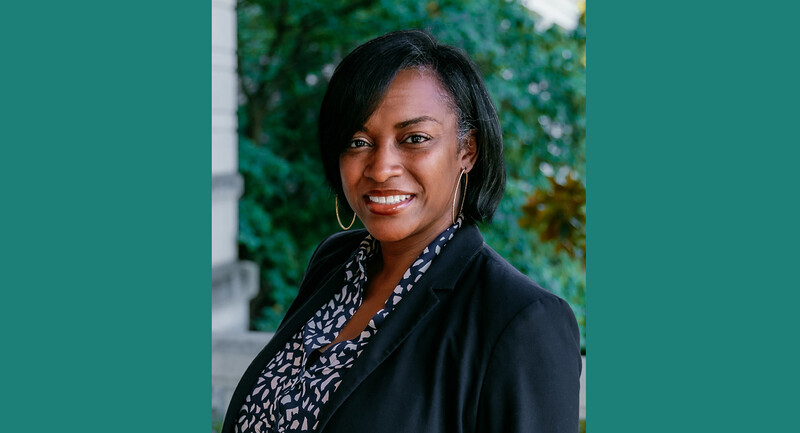Why do I need to know this?" "When will I ever need this again?" As a high school teacher, I regularly hear these questions from students. Sometimes their frequency makes them easy to dismiss as complaints, but buried within them are two important questions for teachers: (1) Does each unit of curriculum we teach fulfill a purpose for students? (2) Are we clearly articulating that purpose to students?
Students spend most of their educational careers beholden to the curriculum that we put in front of them, so using engaging, purposeful teaching materials is important to helping them succeed and cultivating their desire for lifelong learning. Outdated curriculum causes students' motivation, authentic interest, and belief in the power of learning to wane. The challenge and beauty of curating curriculum is that there is a vast array of curricular materials to choose from and, as educators, we must select the most promising resources for our learners while considering student development level, engagement potential, state standards, and district learning goals. In sifting through these challenges, I've found the following six tenets provide useful starting points for effective curriculum revision.
1. Leveraging Relevance and Timeliness
The world can be a confusing place these days, especially for young people. One way to help them gain clarity and perspective is to use texts and resources connected to current events to teach particular skills. This can also be an effective way to breathe more life into a perennial topic. Paying attention to what students ask about, talk about, and wrestle with provides a plethora of ideas to keep curriculum fresh.
For example, a few weeks after my seniors started reading George Orwell's 1984, Russia invaded Ukraine. Shortly after, I came across an article about the way Russian media portrayed the invasion that contained striking similarities to the way that, in the book, The Party manipulated the portrayal of its wars against Eastasia and Eurasia to its own citizens. I scrapped some planned lessons on synthesizing connections across texts and replaced them with ones that focused on similarities and differences between the concepts of control, oppression, and propaganda in the book and the Russian media's messaging on the invasion of Ukraine. Not only did students analyze the text more deeply, but they also engaged in more research about the history of the relationship between Russia and Ukraine.
The inverse of introducing relevant and timely curricular materials is removing outdated ones. This task can be difficult for us as teachers, particularly when it comes to materials that have long been in use. Sometimes it doesn't occur to us to question the purpose and relevance of materials or pedagogical methods because they seem to have always existed in our subject areas. Other times, we might have a nostalgic personal connection to materials, such as classic books, that we know well. But considering when and what to cull is important. For example, chapter questions based on plot summaries were a mainstay pedagogy of my own language arts education. I never minded these activities, but I knew they left little room for individual readers to use their own identities as lenses to interpret a work, so I cut them from my instructional practice.
2. Making Purpose Explicit
Not all curriculum that we need to teach is intrinsically and powerfully engaging. As I tell my students when we start units in this category, "Sometimes we have to eat our vegetables because we need what they offer." Grammar is one example. Even as someone who always gravitated toward English as a subject, I did not come to enjoy grammar until well after my K–12 years. It is, however, important for students to know how to use grammar to punctuate sentences, craft ideas, and structure syntax well. So, at the beginning of grammar units, I explicitly spend time discussing the purpose of learning grammar with students—why it matters, when it's important, and how it plays a role in their present and future lives. I emphasize how important clear communication is regardless of what major they pursue in college or what job they take after high school. I show examples of sentences that contain strong ideas, but that get lost in poor grammar. I tell them that there's nothing better than expressing a good thought with the appropriate punctuation that guides the reader with ease. Clarifying the purpose of any curriculum unit is good practice, but it is especially useful with units that are less likely to interest students.
3. Centering Student Agency
"Why haven't I ever heard of Bayard Rustin?" a student in one of my senior English classes asked me one day. I had to admit I didn't know who that person was. After researching and discussing the accomplishments of the civil rights activist, the student and I pondered why, considering Rustin's impressive contributions to society, familiarity with him was not commonplace in schools. In response to this lack of knowledge about this particular historical figure of color as well as other historical and contemporary figures, the student suggested, "We should all look into different people of color that we've never heard of."
As I was driving home, I thought about our discussion—how awesome it was that a student had questioned why he had a gap in his knowledge and come up with a solution for it. I decided that we were due for a unit highlighting research and speaking skills and I created a new project based on my student's suggestion. After the students each selected a person to research, we reviewed different research sources, their purposes, and how to measure levels of credibility. The students then applied these skills to explore the life and contributions of their chosen person and document their findings in both a written report and a personal reflection about what they had learned. They then shared their research with classmates as part of a "speed dating" activity.
It turns out that this student inspired one of the best units we did all year. Students chose individuals to research who related directly to their own interests and brought a great deal of passion to their projects. A student who did gymnastics researched Luci Collins, the first African American woman to compete in the Olympics as a gymnast for the U.S. A Formula 1 fan chose Lewis Hamilton, the first Black driver to compete professionally in the sport. An aspiring computer scientist choose Joy Buolamwini, a computer scientist at the MIT Media Lab who examines the way bias influences computer programming.
After conducting in-depth research, students completed a short writing assignment reflecting on what they found interesting about the person they focused on. They then turned their written work into oral presentations that not only outlined the person's life and accomplishments, but also addressed whether they had heard about this figure previously, whether their subject's accomplishments impacted their lives today, and what prevents knowledge of this individual from being more widespread.
As I was reflecting about what curricular changes to make for this school year, I immediately thought about the success of this project, but also about how easy it would have been to let the student's idea get lost in the busyness of the day and school year. This reflection was a good reminder to me that our students are thoughtful individuals with ideas about their own learning. They should have agency, and our job as teachers is to transfer their ideas into curriculum that meets standards and develops skills students need. This is only possible when teachers listen to students' ideas with an open mind.
4. Scaffolding Skills
As teachers, we dream of lessons that have every student engaged and working to solve the world's problems together. In my experience, these ideal lessons do, in fact, exist (OK, I'm still working on the solving the world's problems part). They just require quite a bit of scaffolding and curriculum planning—more than I ever realized when I first started teaching.
Our students should have agency over their own learning, and our job as teachers is to cultivate those ideas into curriculum that meets standards and develops skills students need.
In my 11th grade Advanced Placement English Language and Composition class, I not only prepare students for the types of writing and multiple-choice questions that will be on the AP exam, I also integrate nonfiction composition and analysis skills into tasks beyond composition writing, to reinforce their multipurpose value. For example, I created an inquiry-based project that asks students to choose a topic that interests them, conduct preliminary research, and then turn the topic into an inquiry question. Next, they locate and analyze sources in service of their question, synthesize what they found in their sources into themes, and reflect on what they learned about both the research process and their question.
Students document their research steps, findings, and reflections on what they learned in a final website and prepare a short presentation. For instance, one student interested in gymnastics developed an inquiry question about how the culture around gymnastics has led to the exploitation of athletes. After more systematic research drawing from ten different sources, the student's findings were twofold: (1) The sport has built-in power imbalances that discriminate against gymnasts; and (2) medals and publicity are prioritized over athletes' well-being. The student then documented both their findings and their personal reflection on those findings with a website they presented to their peers.
The year-end final website presentations, when students show off what they learned and ask one another questions, is one of those unique classes where everything comes together. The lessons in between, however, are the opposite—painstaking and ordinary, but necessary. I scaffold the project into 10 steps throughout the year, with each step broken into smaller bits. For example, step four is collecting information. Before students embark on collecting information for their own questions, we review different types of sources and their uses, and how to locate, read, and take notes on sources. Only after reviewing this information and completing examples together do students apply these skills to collecting sources for their own questions.
Lessons that require combing through sources aren't glamorous, but they provide students with the foundation to eventually reach a higher level. The confluence of scaffolded skills, knowledge of the research process, and student choice is where transcendent student learning happens.
5. Contemplating Audience
Most of the time, I am the sole audience for student work. Students know they are turning in their assignments to me, and I am assigning a grade. Constantly submitting assignments for a teacher can make learning seem narrow. The AP English Language and Composition inquiry project has components of an audience beyond just me because it requires students to publish a website that I disseminate to other classes, school staff, and parents/guardians. Students also present in small groups to one another and to teachers and administrators I invite into class. Ultimately, I am the one that assigns a grade for this project, but the focus is to create a final website and presentation for an audience other than me.
This same idea came into play in my 12th grade English class with the project investigating lesser-known historical figures of color. The audience became not just the teacher grading the project but the entire class, with the purpose of improving our collective knowledge instead of just submitting an assignment to check a box.
Sometimes it doesn't occur to us to question the purpose and relevance of materials or pedagogical methods because they seem to have always existed in our subject areas.
6. Translating Skills into Action
If one purpose of education is to develop productive citizens who positively contribute to society, our curriculum also needs to train students to translate skills into action. As an example of my attempt to help students make this transference leap, I introduced an anti-harassment bystander intervention training at the end of the 12th grade English curriculum I teach. Throughout the year, various works that we read raise important societal issues—gender and racial oppression in Their Eyes Were Watching God; Native American oppression and mental health stigma in One Flew Over the Cuckoo's Nest; oppression, power, and propaganda in 1984; and anti-Asian American Pacific Islander sentiment in Woman Warrior. Becoming more educated about these issues through reading, analyzing, discussing, and writing about these texts should mean we are better able to make informed decisions and actions that ensure we respect all identities and to respond when we notice disrespect or marginalization of another individual or group.
One of the goals of the bystander-intervention training includes being able to identify oppressive power dynamics at play during a public harassment incident and intervene using the "5 Ds" of delay, distract, delegate, document, and direct. By tying the curriculum content to a larger, more important set of actions—making society safer for everyone—students see how learning directly impacts their world.
Keep Experimenting
Implementing tenets like these that foster effective and engaging curricula is much easier said than done. Not every curricular unit will integrate each of these actions, and striking the right balance will require a substantive amount of trial and error. But keeping at it, staying patient and curious, and listening to students are key to navigating this process. And when it all comes together, the result—an engaging, meaningful, and purposeful lesson, unit, or curriculum—creates endless possibilities for student learning to take root and flourish.









